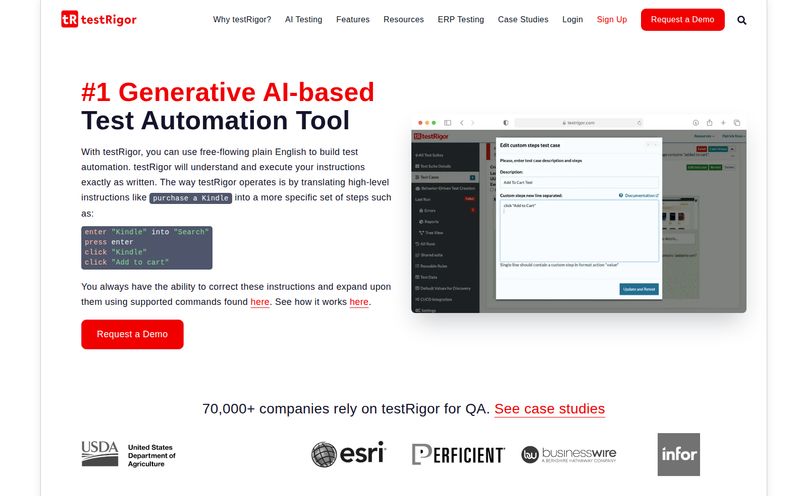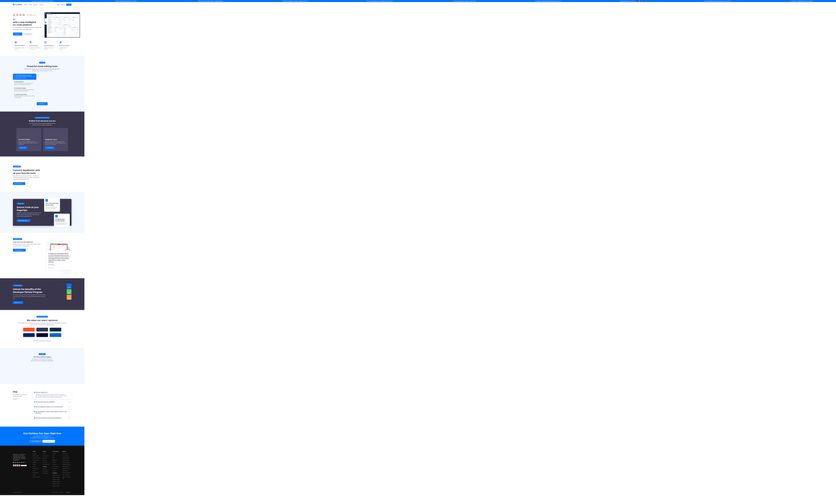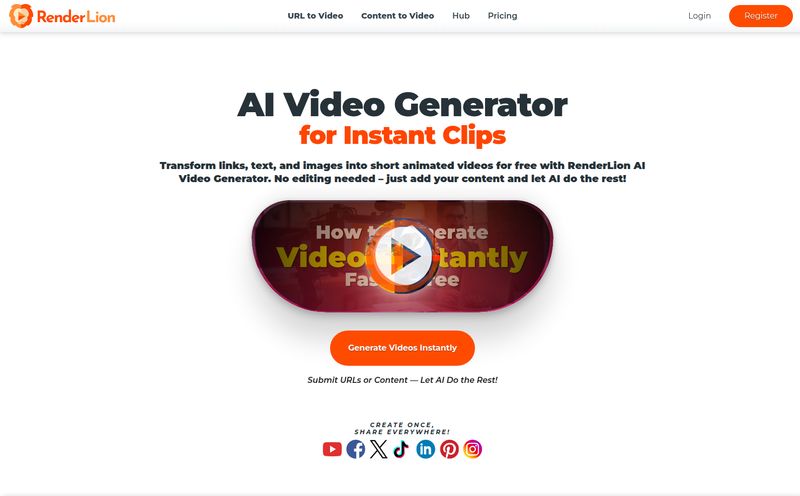I’ve been in this SEO and web traffic game for a long time. Long enough to remember when getting a simple animated banner on a site required a cocktail of clunky Flash files, prayers, and a developer who subsisted on cold pizza and Jolt Cola. If you wanted a 3D interactive experience? Hah. You better have a budget the size of a small nation's GDP and the patience of a saint.
So, when I first heard about Dora AI, a platform that claims you can generate, customize, and deploy 3D animated websites using natural language… my cynical veteran-blogger senses started tingling. Another “game-changer”? Sure. We hear that every other Tuesday. But this one… this one felt a little different. It’s not just about building sites faster; it’s about building a different kind of site altogether, without the soul-crushing complexity. So I decided to take a look under the hood.

Visit Dora AI
So, What Exactly is Dora AI?
At its heart, Dora AI is a no-code website builder with a seriously impressive party trick: AI-powered 3D animation. Imagine telling your computer, "Create a sleek, futuristic landing page for a new tech product with a floating, rotating 3D model of a drone," and watching it actually happen. That’s the core promise.
It's designed to be a bridge. A bridge between the wild, imaginative ideas stuck in a designer's head and the practical reality of a live website. For years, designers would create these breathtaking mockups in Figma, only to have developers say, "Yeah, we can't actually build that scroll-triggered 3D-to-2D morphing animation on our budget." Dora AI seems to be saying, "Yes, you can." It wants to put a director's chair in the hands of the designer, no coding crew required.
The Features That Actually Matter
A tool is only as good as its features, right? Let's break down what makes Dora tick.
From Prompt to Published Website with AI
The headline feature is, of course, the AI generation. You type in a prompt, and it spits out a fully editable website. I’ve played with a few of these AI site generators, and they can be hit or miss. My experience here was… surprisingly good. The initial output isn't a final, client-ready masterpiece. Let's be real. It's more like a highly sophisticated starting block. But it’s a heck of a starting block, getting you about 70% of the way there in seconds. The structure is there, the layout makes sense, and the aesthetic is coherent. It saves hours, maybe even days, of initial setup.
The Visual Editor and No-Code Promise
Once the AI has done its thing, you jump into a visual editor that feels familiar to anyone who's used tools like Webflow or Figma. It's all drag-and-drop, with properties and settings panels on the side. They have this thing called a “constraint layout” system which is just a fancy way of saying it makes responsive design intuitive. You can set rules for how elements should behave on different screen sizes, which is absolutely critical for SEO and user experience. No more building a separate mobile site. Thank goodness.
Oh, and did I mention the Figma import? For design-led teams, this is huge. You can take your static, pixel-perfect designs from Figma and bring them directly into Dora to start animating. That's a workflow that just makes sense.
Let's Get Three-Dimensional: The Animation Engine
This is where Dora truly stands out from the crowd. This isn’t just about fade-ins and slide-ups. We’re talking about genuine 3D model integration and keyframe-based animation. You can make objects move, rotate, and scale along the Z-axis as the user scrolls. You can create complex, layered visual narratives that were previously the exclusive domain of hardcore coders using libraries like Three.js. It's surprisingly powerful and, I have to admit, a lot of fun to play with. It turns the process of web design from building a static brochure into creating an interactive world.
My Honest Take: The Good, The Bad, and The "Hmm..."
Okay, no tool is perfect. After the initial excitement, here’s my more level-headed breakdown.
The absolute best part is the democratization of high-end design. Freelancers and small agencies can now offer incredibly immersive websites that used to be reserved for brands with massive budgets. The speed is also a huge plus. But, on the other side of the coin, a reliance on AI for the initial design means you do have to spend time refining it to make it unique. If not, we could see a wave of cool-looking but slightly generic 3D websites, which would be a shame.
And the classic no-code caveat applies: you are working within the platform's limits. For 95% of projects, this is fine. But if you need some incredibly niche custom function, you might still need to write some code or find a different solution. But for its intended purpose—creating visually stunning marketing and portfolio sites—it’s a powerhouse.
How Much Does This Magic Cost? A Look at Dora's Pricing
Price is always a major factor. Dora AI has a tiered system that seems pretty reasonable for what you're getting. They work on a credit system for AI generations, which is becoming pretty standard.
| Plan | Price | Best For |
|---|---|---|
| Starter | $0 / month | Hobbyists and anyone who just wants to kick the tires. You get a feel for the editor but it comes with Dora branding and a subdomain. |
| Basic | $14 / month per site | This is the sweet spot for most freelancers and small businesses. You get a custom domain, no banner, and a decent chunk of AI credits. |
| Pro | $25 / month per site | For high-traffic sites or projects that are heavy on 3D models and effects. You get more power, more credits, and faster generation speeds. |
| Custom | Let's Chat | The enterprise-level plan for big teams with big needs. |
Note: Pricing is always subject to change, so check their official pricing page for the latest info.
Who is Dora AI Actually For?
I see this being a dream tool for a few key groups. Creative freelancers and design agencies are the most obvious. They can now build the complex, animated portfolios they've always wanted to, without outsourcing the development. Marketers launching a new product could create an unforgettable landing page that tells a story in 3D. Even small businesses in creative fields like photography or architecture could build a site that truly reflects the quality of their work.
Is it for a total beginner who has never designed anything? Maybe. The AI helps a lot, but a good eye for design will still get you much further. Is it for a hardcore developer? Probaly not. They'd likely feel constrained. But for everyone in between, it occupies a very exciting new space.
So, Is Dora AI the Future of Web Design?
"The future" is a big, bold claim. But is it a major signpost for where we're headed? Absolutely. Tools like Dora AI are lowering the barrier to entry for what we consider “premium” web experiences. It's pushing the boundaries past static pages and simple parallax scrolling into something far more cinematic.
It's not a magic wand that will instantly make you an award-winning designer, but it is an incredibly powerful new type of paintbrush. It handles the mind-numbing technical stuff, letting you focus on the creative. And in my book, any tool that lets creativity lead the way is a step in the right direction. I'm genuinely excited to see what people build with it.
FAQs about Dora AI
- Is Dora AI good for SEO?
- From what I've seen, yes. The sites it builds are based on standard web technologies and its responsive design capabilities are crucial for mobile-first indexing. Like any builder, good SEO will still depend on your content, structure, and keyword strategy, but the platform itself seems to build a solid foundation.
- Can I import my designs from Figma?
- Yes! This is one of its strongest features for designers. You can import your static Figma designs directly into Dora to start adding 3D elements and animations.
- Do I need to know how to code to use Dora AI?
- Nope. That's the whole point. It’s a completely no-code platform. You build everything in a visual editor.
- Is Dora AI free to use?
- It has a free "Starter" plan that's great for trying out the platform. It has some limitations, like a Dora banner and subdomain, but it's fully functional for learning and experimenting.
- What kind of websites can I build with Dora?
- It's best suited for visually rich sites like marketing landing pages, product showcases, portfolios, and event pages. Anything where you want to make a big visual impact with 3D and animation.
- How does the AI credit system work?
- You use credits each time you use the AI to generate or edit a page. Different plans come with a different number of credits per month. It's a way to meter the use of the more computationally intensive AI features.



